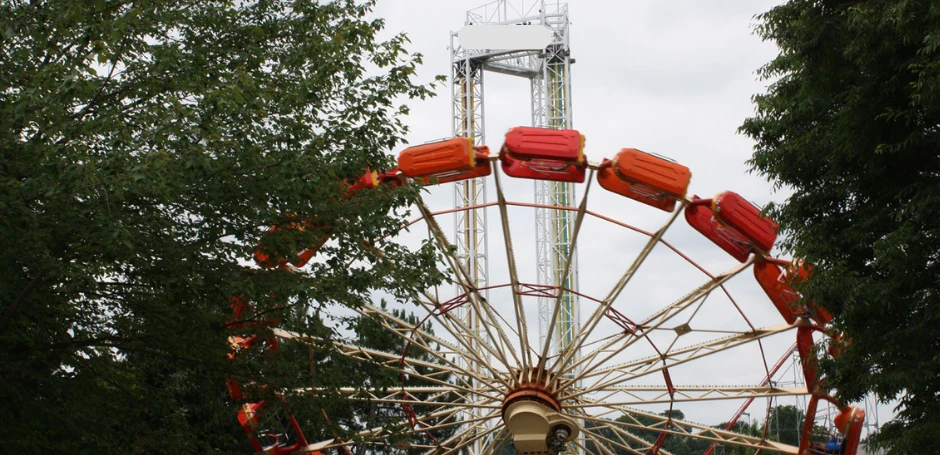Hydraulic accumulators are found in many sectors of the entertainment world. They can be used to provide energy for rapidly deploying special effects, dampening the shock in a system, providing a smooth undulating experience, providing additional volume required in a long return line during a high-return-flow segment, or for energy storage due to a limited electrical supply to the show floor.
For the hydraulics on concert stage projects we’ve done that require large amounts of flow for a limited amount of time, a bank of accumulators can be nested under the stage and filled with a 10 GPM system over a period of time and, then, release the flow at a level equal to 75 Hp of energy. This provides a bigger effect for the smaller electric supply and, also, does it in a much quieter fashion. The power unit can be operated during louder segments of the show and, then, the hydraulics can deploy during completely quiet times with no distraction from noise. There are, also, times when a stage element is desired to have a smoother operation or less noise from decompression or water hammer and accumulators can be strategically used for these benefits.
The entertainment industry has unique requirements and limitations that require a different thought process than many standard industrial applications for accumulators. When the production team is calling for an element’s motion to have more power than a venue can provide, accumulators can help to make it a reality. This can be on a stage floor, in the middle of a field, or at an amusement park. One project for a major US automobile manufacturer’s display at an international auto show involved designing a lift system to raise about 20 feet, rotate, then descend after the main visual experience was complete. We were able to perform the hydraulic fluid accumulation during the loading and unloading segments of the ride. Being indoors this, also, had to be super quiet, which we accomplished with a unique enclosure and cooling system.
For one of the amusement park rides we’ve worked on, the piston accumulators are used to create the bouncing effect on a ride which takes riders up into the air, then gently bounces them back to the ground. Once the ride has started, the passenger cart is lifted to the top of the boom and the cycle begins. The cart is dropped and the hydraulic fluid is restricted from going back to the tank with the flow control valves and fills the topside of the accumulator with fluid. The nitrogen charge on the bottom side of the accumulator is compressed momentarily and then rebounds (much like a shock) and forces the hydraulic fluid to the topside of the cylinders, which moves the rods down and creates the bounce effect. This process is repeated each time the cart drops. By opening and closing valves, this spring effect can be fully experienced or it can be eliminated from the system, so the spring effect is no longer active. Hence, the hydraulic “spring” is more universal than a mechanical spring is this instance.
On another amusement park ride, gondolas are spaced around a huge wheel which spins. As the ride begins, the circle of gondolas start to spin horizontally, slowly at first and, then faster and faster. At the height of its speed, the huge wheel tilts vertically on an 80 foot hydraulic cylinder as the gondolas spins around. The accumulator is used as surge suppression on the cylinder. The weight of the ride coming down would cause the cylinder to be too stiff and provide a harsher feeling as the rides begins to decline. The accumulator helps to smooth out both the ascent and the descent of the ride preventing the surges that would create a choppy or jerking experience.
Think about the work accumulators do the next time you enjoy an action packed, live concert or a thrilling amusement park ride.


Leave A Comment